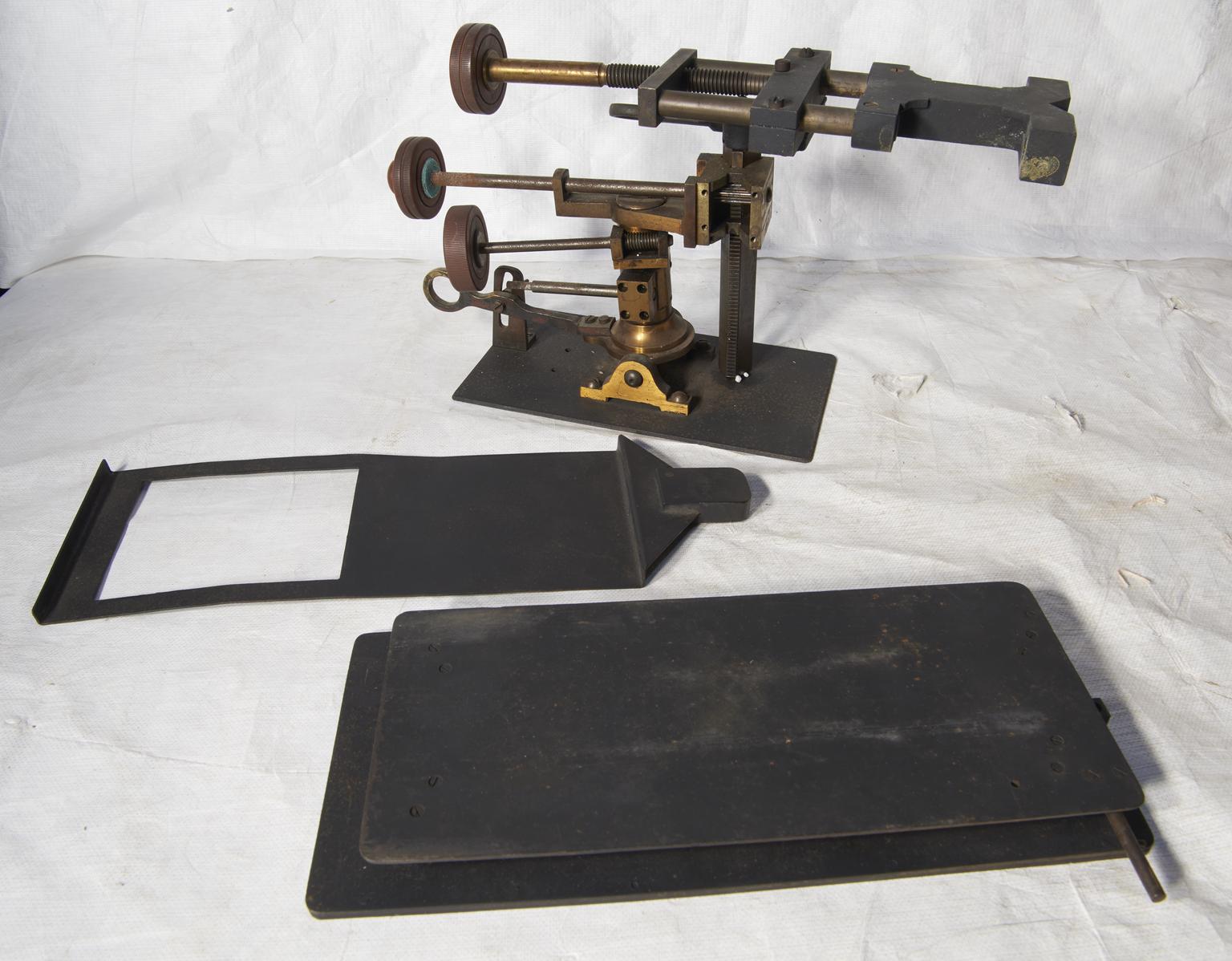Shutter For Kinemacolor Projector
Shutter for Kinemacolor projector on table type stand. (Safety shutter operated by centrifugal mechanism. Two sector shutter behind lens), Made by The Natural Kinematograph Co. Ltd., London
More
Kinemacolor was the first successful colour motion picture process, used commercially from 1908 to 1914. It was invented by George Albert Smith in 1906. It was launched by Charles Urban's Urban Trading Co. of London in 1908. From 1909 on, the process was known and trademarked as Kinemacolor (The Natural Color Kinematograph Company Limited). It was a two-colour additive colour process, photographing and projecting a black-and-white film behind alternating red and green filters.













